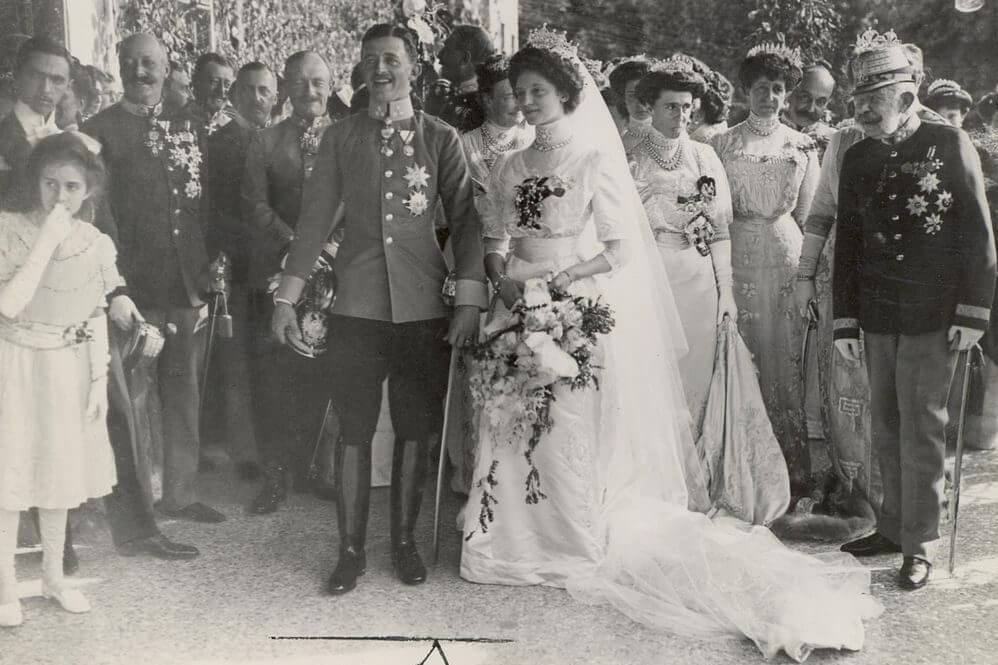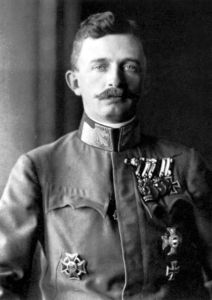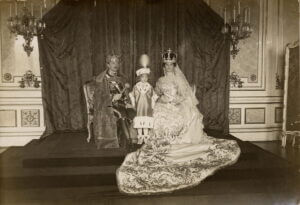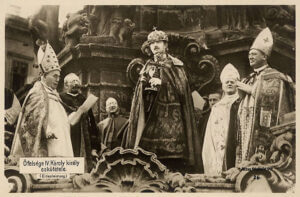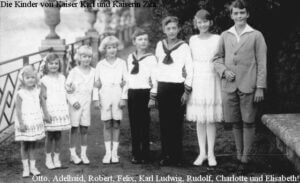In a time when destination weddings are popular, meet a couple who planned a destination marriage.
"Now, we must help each other to get to Heaven," said a young groom named Karl to his bride, Zita the day after their October 21, 1911 wedding.
And so they did. We now know them as Blessed Emperor Karl and Servant of God Empress Zita von Habsburg of Austria-Hungary.
Their story begins with a royal wedding.
You see, Karl was an archduke and Zita was a princess. At first, their story reads like a fairy tale. They first met as children, being related to all the same people, as most European royals were. Ten years later they met again. Karl was serving in the cavalry and, through a series of misfortunes befalling his family, had become second in line to inherit the Austro-Hungarian Empire. Picture a prince riding in on a white horse and you've got it.
Zita, who was four years younger, wanted to take the relationship slowly. Not Karl. Hearing a rumor that Zita was engaged to a Spanish prince, he rushed to the side of their mutual aged relative, Archduchess Maria Theresa. She was a sort of fairy godmother to royals in distress. She assured him that the rumor was false but Karl wasn’t taking any chances. He told his aunt: “Well, I had better hurry in any case or she will get engaged to someone else.”
Their wedding had all the pomp and pageantry you'd expect from a royal wedding. The impressive guest list included the reigning monarch, Emperor Franz Joseph, the heir apparent Archduke Franz Ferdinand, and enough princes and princesses to fill a storybook. The couple was young and beautiful, and so in love.
They represented hope and a bright future.
How quickly things would change. Who knew that not even three years later, a Serbian assassin would fatally shoot Archduke Franz Ferdinand and his wife, igniting the start of World War I and catapulting Karl into almost immediate succession? You see, the Archduke’s wife was not a royal, so his children could not legally succeed him as heirs. With Emperor Franz Joseph well into his eighties, Karl’s succession to the throne was at the door.
Who knew? Pope Saint Pius X knew. Upon becoming engaged, Princess Zita had taken a family trip to the Vatican and had a personal audience with the pope. The sainted Pope called Karl “a gift from Heaven” and said he expected great things from the marriage.
Then he said something strange, that Karl would soon be on the throne.
Zita, thinking that the pope had made a mistake, gently reminded him that Karl was not the direct heir to the throne. It was Archduke Franz Ferdinand. “If it is an abdication… I do not know...” said the pope.
And indeed, in 1916, after only two years of preparation, much of it spent serving at the front, Karl would inherit the crown, and also the war. He was just 29.
For the coronation as King of Hungary, Karl wore the crown of St. Stephen, which dated back to the year 1000, during the days when Hungary first became a Christian nation. He wore a mantle that had been embroidered by the sainted king’s wife, Gisele. To Karl, these were like vestments. He did not wear them for mere ceremonial purposes but pondered them, and strove to be worthy of them.
He began his reign with an example of self-sacrifice.
After the church ceremonies, there would be no feasting, no dancing, not while his people were suffering the ravages of war.
Zita, now a young mother, supported her husband in his new responsibilities, chief of which was ending the war. The Habsburgs were like so many royal families of Europe, fighting their own relatives on opposing sides. Zita’s brothers were fighting for France. Rather than abandoning the ties of the family as did some royals, Karl and his brothers-in-law opened secret negotiations for peace.
Aided by Pope Benedict XV, Karl pleaded that Europe had already lost too many human lives to go on fighting. Neither side, however, would back down. Karl’s own chief ally, Germany, and the opposing primary forces of France, England, Russia, and Italy all believed that victory was just over the next line of trenches.
Each side gained ground, only to lose it again.
It was not until the entrance of the US in 1917, that the balance was tipped and the allied forces won the war. Losing the war and all the chaos that came with that, forced Karl from the throne and sent him into exile. For a time he and Zita lived in a private home in Switzerland. There Karl, obedient to his kingly oath, planned his return to Hungary. But his regent, now used to the power, betrayed him and the plan failed. Eventually, with all his possessions confiscated, he and a pregnant Zita and their seven children were exiled to the Island of Madiera.
Madiera is an island in Portugal. It is quite lovely in pictures but the conditions for Karl and his family were bleak. Their borrowed home was damp and chilly most of the year. Karl, run down with cares, grief, betrayal, and poverty, caught a chill and contracted pneumonia.
He suffered for days not only from the disease but also from the primitive treatments. In his agony, he cried out to Zita, “Oh, why don’t they let us go home? I want so much to go home with you!” When it was time for him to receive the last sacraments, he called his eldest son and heir Otto to his side. He wanted him to see how a Catholic ruler suffers for his people.
Also, he had a final instruction for Zita.
Concerned that no one would help her after he was gone, she was to go to the King of Spain. “He is chivalrous. He has promised me.” His dying words to Zita were, “I will love you forever.” Then, “Yes, yes. As you will it… Jesus!” and he died.
Karl was buried on the island, his body not being allowed into his former realm. The children and the expectant Zita followed the funeral procession. She would wear black for the rest of her life. Though she was only 29 years old, she would never marry another.
Zita did write to the King of Spain, who, with the help of Pope Pius XI, convinced the victories allies that they had nothing to fear by allowing Zita back onto the continent of Europe. When she arrived in Spain, the king told her that the night before Karl died, he felt a strong inner conviction that if he did not take Zita in, his own family would eventually suffer the same fate. It was only after he resolved to have mercy that his peace returned.
Zita and her family began a hidden life.
Fifty years after his death, while Zita was yet alive, Karl’s body was exhumed from its primitive grave and found to be incorrupt. He was beatified in 2004 by Pope Saint John Paul. His feast day would be his wedding day, October 21. He is the patron saint of world peace.
In 1989, after 67 years as a widow, Zita joined her husband in paradise. Their hearts are buried together in Muri Abbey, Switzerland. Read more about their inspiring story in the book, A Heart for Europe.
